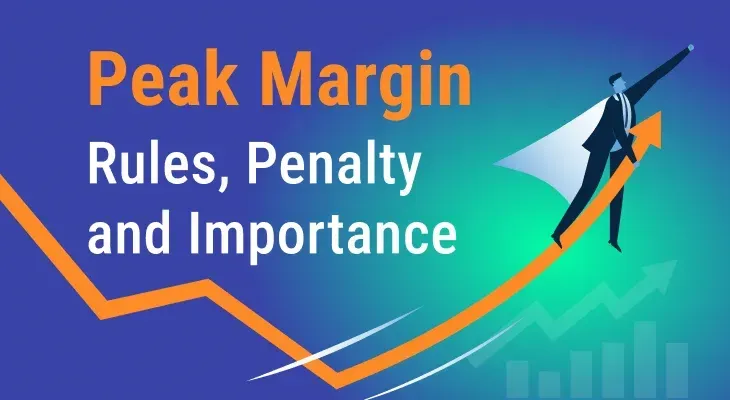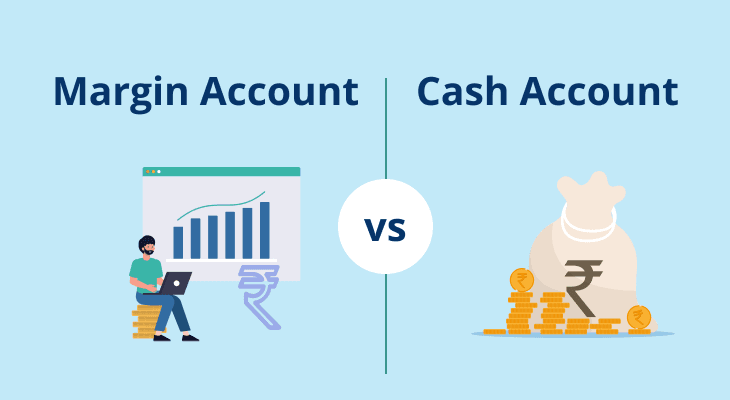
Know all about Peak Margin: Its Rules, Penalty and Importance
The Securities and Exchange Board of India (SEBI) introduced the Peak Margin Rule (effective December 2020) with the objective of reducing the leverage provided to traders and investors in the Indian stock markets. What is the peak margin rule and why do you need to know it? Read on to get all the relevant information on the topic.
What is the ‘Peak Margin’ rule?
Peak Margin rule requires DPs (depository participants) and brokers to collect a higher upfront margin, known as the 'peak margin', from their clients for all of their open positions in stocks and derivatives. The peak margin is calculated based on the highest margin requirement of the previous month.
In addition to this, the peak margin needs to be collected from the clients by the end of the trading day. In other words, you, as the client, need to maintain the required margin at all times. Failure to do so can result in the squaring-off of your position by the broker to meet the margin requirements.
What was the need for SEBI’s Peak Margin rule?
The prime objective of the peak margin rule is to reduce the risks associated with high-leverage trading and to ensure that clients have enough margin to cover their positions. Before the introduction of this rule, the calculation of your margin requirements was done based on your closing positions at the end of the trading day. Using the earlier margin system, you could buy securities by paying only a percentage of the total value, with the rest being funded by the broker. This led to a surge of trading in the derivatives market in India and a higher risk of speculation, leverage, and defaulting by investors. By requiring clients to maintain the peak margin at all times, the peak margin rule aims to prevent situations where clients do not have sufficient margin to cover their losses, leading to defaults and settlement issues.
How does the Peak Margin rule affect investors and traders?
In the previous system, some brokers would provide leverage up to 6 times that of the original amount deposited by the investor. This meant that by depositing ₹1 Lakh you could get trading exposure up to ₹6 Lakhs. It is easy to see the large risk here with regards to speculative trading and the big loss incurred by the broker in case of a default.
Now, though, the peak margin is determined at the beginning of a trading day and 100% margin needs to be maintained to place the trade. So, if you wish to buy stocks worth ₹1 Lakh that have a set margin of ₹25,000, then you will need to put up the entire ₹25,000 as the upfront margin requirement to trade. Furthermore, you will also be required to maintain sufficient balance in your account that is equal to or more than the peak margin requirement.
Failure to comply can result in a ‘peak margin rule penalty’. This amount is calculated as a percentage of the actual shortfall. Typically, the penalty is 5% if the shortfall is under ₹1 Lakh and 10% of the applicable margin. The penalty increases to 1% for amounts equal to or higher than ₹1 Lakh. Continued shortfall margins for more than 3 consecutive days will result in a penalty of 5% of the shortfall for each day, starting from the 3rd day of the shortfall.
In a nutshell, the Peak Margin rule was introduced to improve the stability and transparency of the Indian stock markets. It aims to achieve this by promoting responsible and fair trading practices among brokers and traders, and by reducing the risks associated with intraday trading. From an individual perspective, you will now need to put up 100% margin as capital to trade, and ensure the minimum required balance is maintained to avoid incurring the peak margin penalty.
FAQ
What is peak margin?
In order to lessen the risk of using excessive leverage in the stock market, the Securities and Exchange Board of India (SEBI) has placed a new margin requirement on stockbrokers and traders called peak margin. By maintaining a minimum margin of 25% of the whole transaction value at all times as required by the peak margin, traders are no longer permitted to use funds from prior deals to satisfy the margin requirement.
What is the peak margin penalty?
The peak margin penalty is a penalty imposed on stockbrokers by stock exchanges if their clients fail to maintain the required peak margin. The penalty is calculated as a percentage of the shortfall in margin. Usually, the peak margin penalty is 5% for margin shortfall less than ₹1 Lakh and 10% of the applicable margin 1% for amounts equal to or higher than ₹1 Lakh.
When did peak margin come into effect in India?
SEBI’s peak margin rules were introduced on December 1, 2020, to serve as the new margin system for the Indian stock market.
Why was peak margin introduced in India?
Peak margin was introduced to reduce the risk of excessive, high-risk intra-day speculation and improve the stability of the stock market. The previous margin system allowed traders to use the funds from their previous trades to cover the margin requirement, which increased the risk of overleveraging and posed a threat to financial stability of the market. Peak margin aims to address this issue by requiring traders to back their trades with sufficient cash to cover the margin requirement of the total trade value at all times.


